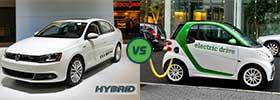Difference between LG Optimus L5 II, L5 II Dual and Sony Xperia E
Key Difference: The LG Optimus L5 II and its counter part LG Optimus L5 II Dual are two entry-level smartphones by the company. The LG Optimus L5 II and L5 II Dual are quite similar to each other but differ in certain places, including looks. The device comes with a 4-inch True IPS LCD capacitive touch screen that offers around 233 ppi pixel density. The Sony Xperia E and E-Dual are two entry-level phones from Sony Mobile. The phone comes with a 3.5 TFT capacitive that has a ~165 ppi pixel density. It comes with a 1 GHz Cortex-A5 Qualcomm Snapdragon processor, an Adreno 200 GPU and 512 MB RAM.

LG has recently added a new phone series to its line-up. Following the original LG Optimus L series, the new phones include LG Optimus L3 II, LG Optimus L5 II and LG Optimus L7 II. The LG Optimus L5 II and its counter part LG Optimus L5 II Dual are two entry-level smartphones by the company. Although review websites say that the company has managed another miss, many users disagree and have enjoyed the phone specifically because of its cheap price.
The LG Optimus L5 II and L5 II Dual are quite similar to each other but differ in certain places, including looks. The Optimus L5 II has a bar format that has an oval hardware Home button on the front nestled right under the screen. This button is flanked by the Menu and Back capacitive buttons. The Optimus L5 II Dual, however, has four capacitive buttons Back, Home, Menu and the last button allows switching between the two SIM cards. The small design of both the phones is quite comfortable to hold and is also to use only with one hand. The buttons are also placed to make the device user friendly.
The power button is placed on the right side of the device, while the left side houses the volume rocker and a customizable button that is initially customized to Quick Note. The 3.5 mm jack is on the top of the device, while the USB charging port is on the bottom. The back of the device has the camera on the left side along with the LED flash on the bottom of it. The loudspeaker grille can be found on the bottom right corner. The company has given the back a ‘fake’ metallic look that can be passed of for a metallic back from far away. However, the back is made of plastic and has a little cheap feeling to it. The hardware Home button on the L5 II has LED behind it that illuminates while charging and also lights up different colors for different notifications.
 The device comes with a 4-inch True IPS LCD capacitive touch screen that offers around 233 ppi pixel density. The screen has decent resolution and clarity for the price. The phone is quite light and weighs around 103 grams for both models. Both the models come with Android 4.1.2 Jelly Bean out of the box and have been customized by Optimus 3.0 UI. The major difference between the two devices is the L5 II Dual’s ability to support dual SIM cards.
The device comes with a 4-inch True IPS LCD capacitive touch screen that offers around 233 ppi pixel density. The screen has decent resolution and clarity for the price. The phone is quite light and weighs around 103 grams for both models. Both the models come with Android 4.1.2 Jelly Bean out of the box and have been customized by Optimus 3.0 UI. The major difference between the two devices is the L5 II Dual’s ability to support dual SIM cards.
Both the devices are powered by 1 GHz single core processor, that results in lag if playing high-res demanding games. It also offers 512 MB RAM. The phones come with 4 GB internal storage capacity, of which only 1.75 GB is available to the user but, it can be expanded by 32 GB using a microSD card. The 1.75 GB still results in very less memory as Jelly Bean does not allow users to shift apps to the SD card. Both the devices come only with a 5 MP primary camera with a LED flash. The camera offers basic features such as geo-tagging, shot modes and a Cheese Shutter (that takes a photo when users say cheese). The camera also has VGA video taking capability.
The phone is powered by a removable Li-Ion 1700 mAh battery, which the company touts provides almost 10 hours of talktime on 3G network. The company has also provided with 50 GB of cloud storage and L5 II Dual offers a very cool feature known as On Screen Phone. This feature allows the phone to connect to a computer using USB or Wi-Fi, the user can then completely control the phone using the mouse and the keyboard. The application comes in the form of the phone on the screen and the user can also control the volume as well as the power buttons. The feature is a benefit for people that work on their computers continuously.
 Sony is a popular smartphone company and has been launching popular phones under the Xperia Brand. Since, its separation with Ericsson, the company has introduced multiple phones in different ranges to cater to all types of demands. The widespread demand of smartphones has required many companies to start manufacturing low-end phones for the masses. The new 2013 line-up of Sony phones include the Sony Xperia E and E-Dual phones. These phones are identical to each other and only differ in some features.
Sony is a popular smartphone company and has been launching popular phones under the Xperia Brand. Since, its separation with Ericsson, the company has introduced multiple phones in different ranges to cater to all types of demands. The widespread demand of smartphones has required many companies to start manufacturing low-end phones for the masses. The new 2013 line-up of Sony phones include the Sony Xperia E and E-Dual phones. These phones are identical to each other and only differ in some features.
The Sony Xperia E and E-Dual are two entry-level phones from Sony Mobile. These are the few of the cheapest models available on the market that have pretty decent features for a low-end phone. The phone has similar design themes to the older Sony phones with a slight inward curve and has shaved a lot of back bulk. The phone is slim and straight and is easy to operate using one hand. The company has also ditched the cheap, plastic back and replaced with it a rubber matte finish. This makes the back prone to fingerprint smudges, while the front screen is completely prone to fingerprints and dust smudges.
The front of the phone has a 3.5-inch display screen with three capacitive (Home, Menu and Back) buttons on the bottom. Above the screen is the earpiece, a hidden status LED and the proximity sensor. On the top end of the device, there is just a 3.5mm headphone jack, while the left side has a microUSB port. The bottom of the screen has a small LED light, while the right side of the device holds the volume rocker, power button and the dedicated camera key. The back of the devices holds the camera on the top and the loud speaker grille on the bottom.
The phone comes with a 3.5 TFT capacitive that has a ~165 ppi pixel density. In terms of technology these days, the resolution and the density is pretty weak, but as this is a entry-level the resolution is decent for the price. However, do not expect high definition resolution. The phone has pretty low contrast and poor viewing angles. The screen is made using scratch-resistant glass proving some sort of protection from scratches. The phone comes with the traditional Sony Timescape UI, which means it comes with certain built-in Timescape applications that are not removable.
In terms of speed and power, the phone is good for an entry-level model. It comes with a 1 GHz Cortex-A5 Qualcomm Snapdragon processor, an Adreno 200 GPU and 512 MB RAM. The phone supports 2G and 3G but not 4G. The Xperia E comes with Android 4.1 Jelly Bean out of the box, which is a good set-up. The Xperia E-Dual comes with Android 4.0.4 Ice Cream Sandwihch but can be upgraded to Jelly Bean. The Jelly Bean comes with all of the special features of Google, including Google Now. There are few modifications to the Android software. Upon unlocking the screen, the home screen has five screens, which are customizable. The differences between the ICS and Jelly Bean can be read in the article, The Difference between Ice Cream Sandwich and Jelly Bean on the website.
The major difference between the E and the E-Dual is that E-Dual supports dual SIM technology, while the E only supports single SIM. Both the phones come with a 3.15 MP back camera with a few features such as 4x digital zoom, Geotagging, Self-timer, Send to web and Touch capture. The camera does not have a great picture taking capability and has low resolution, but is okay for an entry-level phone. The phones also do not have a secondary camera, which means no video conferencing. However, it does have VGA video recording capability. The phone comes with 4 GB internal memory, of which 2 GB is available to the user and the memory is expandable up to 32 GB via microUSB card.
The phones come with a removable Li-Ion 1530 mAh battery that provides an okay battery capacity for an entry-level phone. The phone is considered as a no-nonsense android phone. The phone is a good entry-level phone and offers good features for its price. However, the person would have to sacrifice on secondary camera, photo resolution and a few features. The phone also offers certain neat features such as Overview mode (allows zooming out to see all open applications), Face Unlock, Wi-Fi tethering, Google Apps and Hand writing recognition.
The information for the detailed table about the two phones has been taken from the LG website, Sony Mobile website and GSMArena.com.
|
|
LG Optimus L5 II/ L5 II Dual |
Sony Xperia E/E-Dual |
|
Launch Date |
April 2013 |
E: March 2013 E-Dual: January 2013 |
|
Company |
LG Electronics |
Sony Mobiles |
|
Size |
L5 II: 117.5 x 62.2 x 9.2 mm L5 II Dual: 118.4 x 62.2 x 9.2mm |
113.5 x 61.8 x 11.0 mm |
|
Display |
4-inch True IPS LCD capacitive touchscreen |
3.5-inch TFT capacitive touchscreen, 256K colors |
|
Screen |
480 x 800 pixels (~233 ppi pixel density) |
320 x 480 pixels (~165 ppi pixel density) |
|
Protection |
- |
Scratch-resistant glass |
|
Weight |
103 grams |
115.7 grams |
|
2G Network |
GSM 850 / 900 / 1800 / 1900 |
GSM 850 / 900 / 1800 / 1900 - SIM 1 & SIM 2 |
|
3G Network |
HSDPA 850 / 900 / 1900 / 2100 |
E: HSDPA 900 / 2100 - C1505 HSDPA 850 / 1900 / 2100 - C1504 E-Dual: HSDPA 900 / 2100 - C1605 HSDPA 850 / 1900 / 2100 - C1604 |
|
4G Network |
N/A |
N/A |
|
GUI |
LG Optimus 3.0 UI |
Timescape UI |
|
CPU speed |
1 GHz Processor |
1 GHz Cortex-A5 |
|
GPU |
PowerVR SGX531 |
Adreno 200 |
|
OS |
Android v4.1.2 (Jelly Bean) |
E: Android OS, v4.1 (Jelly Bean) E-Dual: Android OS, v4.0.4 (ICS) upgradeable to 4.1 Jelly Bean |
|
Chipset |
MTK 6575 |
Qualcomm Snapdragon™ MSM7227A |
|
RAM |
512 MB |
512 MB |
|
SIM Size |
L5 II: miniSIM L5 II Dual: Dual SIM |
E: miniSIM E-Dual: miniSIM (Dual SIM) |
|
Internal Memory |
4GB Internal (1.75GB User Available) |
Up to 4 GB (2 GB user available) |
|
Expandable Memory |
Up to 32GB |
Up to 32 GB |
|
Sensors |
Proximity, Ambient Light, Accelerometer, Digital Compass |
Accelerometer, Proximity sensor |
|
Connectivity |
Wi-Fi, Browser, Bluetooth, PC Sync Application, USB, Modem Function, On Screen Phone, Video Streaming, USB tethering. |
2G, 3G, DLNA Certified, HD Voice, Noise supression |
|
Data |
GPRS, EDGE, WLAN, Bluetooth, USB, NFC (L5 II) |
GPRS, EDGE, WLAN, Bluetooth, USB |
|
Speed |
HSDPA, 7.2 Mbps; HSUPA, 5.76 Mbps |
HSDPA, 7.2 Mbps; HSUPA, 5.76 Mbps |
|
WLAN |
Wi-Fi 802.11 b/g/n, Wi-Fi Direct, Wi-Fi hotspot |
Wi-Fi 802.11 b/g/n, DLNA, Wi-Fi hotspot |
|
Bluetooth |
Bluetooth v3.0 with A2DP, HS |
Bluetooth v2.1, EDR |
|
USB |
microUSB v2.0 |
microUSB v2.0 |
|
Primary Camera |
5MP AF Camera |
3.15 MP, 2048x1536 pixels |
|
Secondary Camera |
N/A |
N/A |
|
Video |
VGA @30fps (640x480) |
VGA@30fps |
|
Camera Features |
|
|
|
Sound Enhancement |
- |
xLOUD Experience – audio filter technology; Active noise cancellation with dedicated mic; Manual equalizer |
|
Audio supported formats |
MP3/ WMA / AAC / AAC+ / WAV / AC3 / AAC-LC, AMR-NB, WMA, WAV |
MP3 (.mp3), 3GPP (.3gp), MP4 (.mp4, .m4a), SMF (.mid), WAV (.wav), OTA (.ota), Ogg (.ogg) |
|
Video supported formats |
MP4/ H.264 / H.263 / WMV |
3GPP (.3gp), MP4 (.mp4) |
|
Battery Capacity |
Removable Li-Ion 1700 mAh battery |
Removable Li-Ion 1530 mAh battery |
|
Talktime |
3G: 9 hours 54 minutes |
2G: 6 hours 12 min 3G: 6 hours 18 min |
|
Standby Time |
3G: 642 hours |
E: 2G: 530 hours 3G: 530 hours E-Dual: 2G: 368 hours 3G: 379 hours |
|
Available Colors |
Indigo Black, White, Pink, Titan |
E: Black, Pink and White E-Dual: Black and Gold |
|
Messaging |
SMS (threaded view), MMS, Email, Push Email, IM |
Conversations, Email, Gmail™, Handwriting recognition, Instant messaging, Multimedia messaging (MMS), Predictive text input, Text messaging (SMS) |
|
Browser |
HTML5 |
HTML5 |
|
Radio |
FM radio with RDS |
Radio (FM radio with RDS) |
|
GPS |
A-GPS |
GPS with A-GPS support |
|
Java |
Java MIDP emulator |
via Java MIDP emulator |
|
Additional Features |
|
|
Image Courtesy: lg.com, sonymobile.com









Add new comment